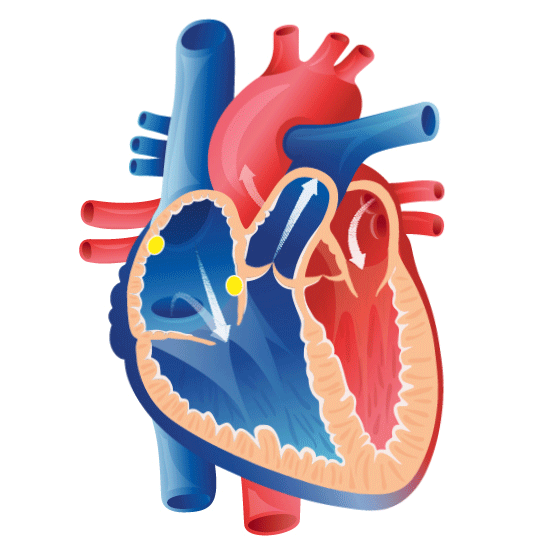Cardiac arrhythmias occur for different reasons and in different forms. There are basically three types: when the heart beats too quickly (tachycardia), too slowly (bradycardia), and irregularly (arrhythmia). The treatment depends on the type and cause of the arrhythmia.
On average, the adult heart beats between 60 and 90 times a minute. A resting pulse of over 100 beats per minute is considered to be an accelerated heartbeat (tachycardia). A heart rate of more than 300 per min. is known as ventricular fibrillation. Ventricular fibrillation is another term for cardiac arrest and results in immediate death if it is not treated with defibrillation within the shortest possible time. A resting pulse under 60 beats per minutes is considered to be a decelerated heartbeat (bradycardia). Sports people and very fit people normally have a resting pulse of between 50 and 60 beats per minute. An irregular heartbeat or arrhythmia is characterised by additional beats (extra systoles) and skips in the heartbeat. A special form, the [atrial fibrillation] is discussed in a separate chapter.
Typical symptoms of cardiac arrhythmia are a noticeably faster heartbeat (rapid heartbeat) and an irregular heartbeat (skipped heartbeats and palpitations). An irregular heartbeat is generally the manifestation of extra beats (extra systoles). They are often harmless; however, there can also be serious diseases underlying them. If the patient also experiences chest pain, dizziness, shortness of breath, fatigue or even loses consciousness, they should be immediately examined by a doctor.
Different diseases can cause cardiac arrhythmia. These include cardiac diseases such as angina pectoris, heart attack, heart valve defects, cardiac insufficiency or heart muscle inflammation. However, hyperthyroidism, drugs or certain medications can also cause cardiac arrhythmia. However, the causes of cardiac arrhythmia are rarely not organic.
An electrocardiogramm (ECG) is one of the most important examination methods for cardiac arrhythmias. It makes it possible to determine the underlying cause of the arrhythmia, such as uncoordinated activity in the electrical discharge rate (atrial fibrillation), a conduction disturbance from the atrium to the ventricles (atrioventricular block) or additional beats (extra systoles).
The treatment depends on the type and cause of the cardiac arrhythmia. Options include medication (antiarrhythmic drugs), surgery, a cardiac pacemaker or an electrophysiological procedure. Find out more about the different surgical options in the chapter entitled Surgery in the event of cardiac arrhythmia.
Different types of cardiac arrhythmias
Why choose Hirslanden
The specialists at Hirslanden, the largest private hospital group in Switzerland, are renowned for their expertise and many years of experience in treating your illness.
You can expect comfortable rooms and a modern infrastructure as well as the highest standards in medicine and care.
We will help you throughout your entire stay, organising additional services such as translators and interpreters, transport, and overnight hotel stays for you and your relatives, and addressing all your administrative questions.
A personal contact from the Hirslanden International team will take care of your needs from the time that you first contact us to arrange an appointment through to the end of your treatment.
Contact us – we are happy to help you!


